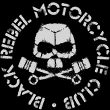mdiehl
Posts: 5998
Joined: 10/21/2000
Status: offline

|
"I don't understand your point about Japanese CAP effectiveness. Maybe you should take a closer look at the 45+ TBD attack during Midway."
I have. The TBD waves arrived separately and piecemeal. See my comment about Midway being as botched up an attack, with respect to coordination, that the US ever made. At no time were more than 14 TBDs engaged at once. Without escort, they were easy pickings for the 15 or 20 A6Ms flying CAP. When the second wave arrived it drew all remaining Japanese CAP to sea level, thus giving a free hand to the attacking (and also unescorted) SBDs. It was, thus, both a botched American coordination attempt and a bothced Japanese coordination attempt at CAP. The problem for the Japanese is that bad CAP was typical, hence near loss of two other CVs at Coral sea, to what were, for the time, *very* small US airstrikes.
"Hi, Only 2 multi CV raids?......."
No. Only two CV raids in which the Japanese successfully attempted to coordinate air strikes from more than two fleet carriers simultaneously. In both cases no opposition was anticipated, so they had the luxury of time to form up properly.
"The US CAP at the Battle of the Eastern Solomons was a real mess due to many factors not the least of which was lousy radio disciplne."
That's not entirely correct. Opinions about the radio discipline were mixed. Since the radio "chatter" did allow pilots to communicate effectively with each other, allowing USN section teams to cooperate at such minor tasks as brushing that A6M off your wingmate's tail, it was concluded that the communication was reasonable. The *problem* was the need for separate frequencies for plane-plane and ship-plane communiques... a policy established in late 1942.
One major problem for the IJN was the damned near absence or unservicability of their radios.
It strikes me as one of the supreme ironies of the war that American pilots raised in a culture of individualism were trained and flew as cooperative, mutually supporting teams. The Japanese, a culture that tended to subordinate the individual to the group (yeah, a big simplification I know), tended to train to a doctrine of heroic individualism, markedly reducing their ability to fight as teams.
|
 Printable Version
Printable Version















 New Messages
New Messages No New Messages
No New Messages Hot Topic w/ New Messages
Hot Topic w/ New Messages Hot Topic w/o New Messages
Hot Topic w/o New Messages Locked w/ New Messages
Locked w/ New Messages Locked w/o New Messages
Locked w/o New Messages Post New Thread
Post New Thread